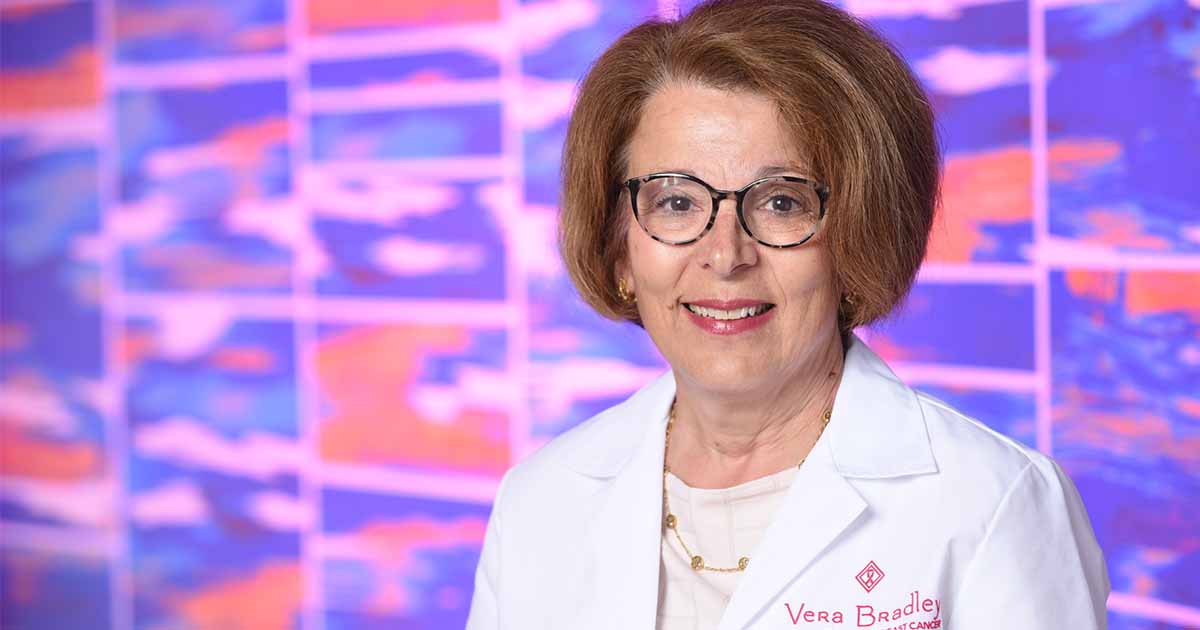
Dr. Anna Maria V. Storniolo, director of biospecimen collection and biobanking core at the Indiana University Melvin and Bren Simon Comprehensive Cancer Center, and her team are responsible for the comprehensive management of all biospecimen samples at the center.
The core includes blood, tissue samples and clinical data from cancer patients, as well as donations of tissue, blood and medical history from more than 5,000 women to The Komen Tissue Bank, the world’s only biorepository of normal breast tissue.
THE PROBLEM
“As you can imagine, efficiently collecting, storing, distributing and cataloging these samples is a complex undertaking,” Storniolo said. “When the core was launched, samples were managed across several different databases and there was no standard operating procedure on how each was organized.
“The administrative burden of managing the disparate systems meant research queries could take weeks to complete, and data generation efforts would often be duplicative across projects,” she noted. “The process was incredibly time-consuming for the team tasked with supporting this work, given much of the searching was done manually.”
In the genomics era, healthcare can gain many insights across different time points, populations and individuals. To make the most of this, the cancer center needs to simplify the process of accessing information. Scientists are experts in their fields with limited time. They need user-friendly tools that give them accurate and reliable information.
“We need to demystify the data and synthesize it across various platforms to answer the questions driving research,” Storniolo explained. “This requires tools that can communicate across complex databases so researchers aren’t as dependent on limited IT resources.”
PROPOSAL
IU’s cancer center needed a platform that could handle the quantity of data across its data “universe” and the complexities associated with the various types of data, both structured and unstructured. A clinical data platform promised to harmonize all available data and create a shared resource for the cancer center, connecting biospecimen data with clinical and genetic data in one, accessible tool.
“With the platform, the team would be able to quickly answer questions about specific cohorts and better collaborate with research teams,” Storniolo said. “The assurance that patient privacy and data security would still be maintained while allowing for faster, easier democratization between partners, was huge.”
MEETING THE CHALLENGE
The cancer center and its clinical data platform vendor worked closely to build a data system that very specifically suited the center’s needs as a biobank and researchers’ needs as the users of that biobank and its data.
“While the project is still being constructed and tested, one of the biggest impacts we’ve seen to date is speed,” Storniolo noted. “In the past, if a scientist needed to look at a certain number of patients with specific parameters – such as age, details of cancer biology and type of treatment – it would take several days to a week to determine how many samples fit the criteria, where they were located, and whether or not they were accessible to the researcher requesting them.”
Using the platform, this now can be done in minutes, she added.
RESULTS
Over the next year, the IU cancer center expects to be able to support additional and more complex research requests and see a reduction in time spent on manual tasks and in duplicative research data generation.
“Our researchers will be able to check sample availability in real time on a self-service basis,” Storniolo reported. “This will allow them to determine project feasibility or generate ideas for new projects more quickly than they can now due to the bottleneck of limited staff who are currently able to do these searches.”
By year’s end, staff expect to see:
- 50% reduction in time spent on manual tasks and a reduction in duplicative research data generation leading to an overall reduction in ongoing operational costs.
- Significant reduction in time per request (from months to minutes).
- 50% increase in the number of research projects supported.
ADVICE FOR OTHERS
“The first step is asking your researchers what they need and finding a technology vendor willing to adapt and keep pace with changes in the industry,” Storniolo advised. “We don’t know everything that’s coming down the pipeline and how we think about science is always changing, so working with developers who are true collaborators and can adjust to users’ needs is essential.
“Oftentimes, when thinking through technological needs, you have to consider both what’s needed right now and what needs arise in the future as science continues to change,” she continued.
Aside from user needs, efficiency is a key consideration, she added.
“The complexity and depth of today’s scientific data often result in a lot of manual work,” she said. “Understanding where you can gain efficiency with technology is critical. You’ll want to think about where you can build the most value for researchers by eliminating some of that manual work.
“Overall, embracing technology might seem challenging, but our goal in doing this is to empower science, not limit it,” she concluded. “With the right technology, your teams can make data more accessible and accelerate research, driving innovation and breakthroughs.”
Follow Bill’s HIT coverage on LinkedIn: Bill Siwicki
Email him: bsiwicki@himss.org
Healthcare IT News is a HIMSS Media publication.
